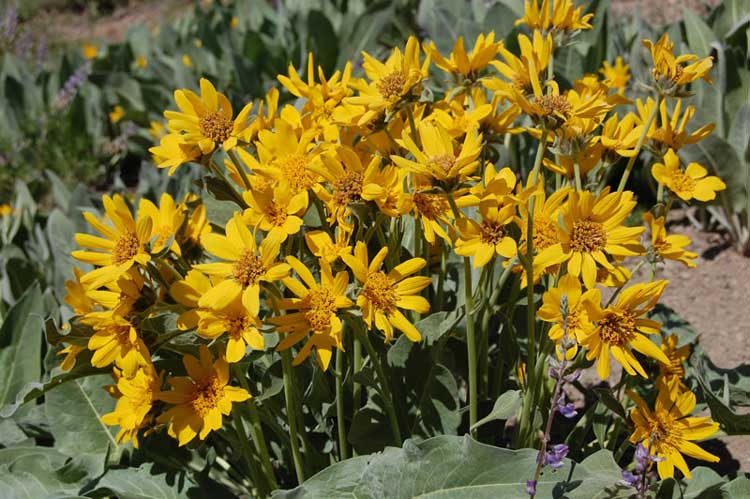
Wyethia mollis, US Forest Service photo
Classification System: APG IV
Superregnum: Eukaryota
Regnum: Plantae
Cladus: Angiosperms
Cladus: Eudicots
Cladus: Core eudicots
Cladus: Asterids
Cladus: Campanulids
Ordo: Asterales
Familia: Asteraceae
Subfamilia: Asteroideae
Tribus: Heliantheae
Subtribus: Engelmanniinae
Genus: Wyethia
Species: Wyethia mollis
Name
Wyethia mollis A.Gray, Proc. Amer. Acad. Arts vi. 544 1865.
Distribution
Native distribution areas:
Continental: Northern America
Regional: Southwestern USA
USA (California, Nevada, Oregon)
References: Brummitt, R.K. 2001. TDWG – World Geographical Scheme for Recording Plant Distributions, 2nd Edition
References
A.Gray, Proceedings of the American Academy of Arts and Sciences 6: 544. 1865.
Links
International Plant Names Index. 2018. Wyethia mollis. Published online. Accessed: Feb. 07 2018.
The Plant List 2013. Wyethia mollis in The Plant List Version 1.1. Published on the internet. Accessed: 2018 Feb. 07.
Tropicos.org 2018. Wyethia mollis. Missouri Botanical Garden. Published on the internet. Accessed: 2018 Feb. 07.
Hassler, M. 2018. Wyethia mollis. World Plants: Synonymic Checklists of the Vascular Plants of the World In: Roskovh, Y., Abucay, L., Orrell, T., Nicolson, D., Bailly, N., Kirk, P., Bourgoin, T., DeWalt, R.E., Decock, W., De Wever, A., Nieukerken, E. van, Zarucchi, J. & Penev, L., eds. 2018. Species 2000 & ITIS Catalogue of Life. Published on the internet. Accessed: 2018 Feb. 07. Reference page.
USDA, ARS, Germplasm Resources Information Network. Wyethia mollis in the Germplasm Resources Information Network (GRIN), U.S. Department of Agriculture Agricultural Research Service. Accessed: 07-Oct-06.
Vernacular names
English: woolly mule-ears
Wyethia mollis is a species of flowering plant in the aster family known by the common name woolly mule's ears. The plant is hairy to woolly in texture, sometimes losing its hairs with age.
Wyethia mollis is a coarse perennial herb[1] native to the mountains of northern California, especially on the east side of the Sierra Nevada, and southeastern Oregon and western Nevada. It grows in forests and other mountain habitat such as dry open meadows with sagebrush. It grows from a tough taproot and caudex unit, producing a stem 30 to 40 centimeters tall, and reaching a meter in height at times. It thrives in volcanic soils because of its deep roots.[2]
The leaves have lance-shaped or oval blades up to 40 centimeters long, which are glandular and coated in woolly hairs, especially when new. They usually grow up vertically from the base. The inflorescence is a solitary flower head or a cluster of 2 or 3 heads, each with up to 11 yellow ray florets which may be up to 4.5 centimeters long. The fruit is an achene about a centimeter long, not counting its pappus. The seeds are edible and taste similar to sunflower seeds.[1]
References
Weeden, N. F. A Sierra Nevada Flora. 4th Ed. Wilderness Press. 1996.
Blackwell, L. R. Wildflowers of the Sierra Nevada. Lone Pine Publishing. 1999.
Retrieved from "http://en.wikipedia.org/"
All text is available under the terms of the GNU Free Documentation License

